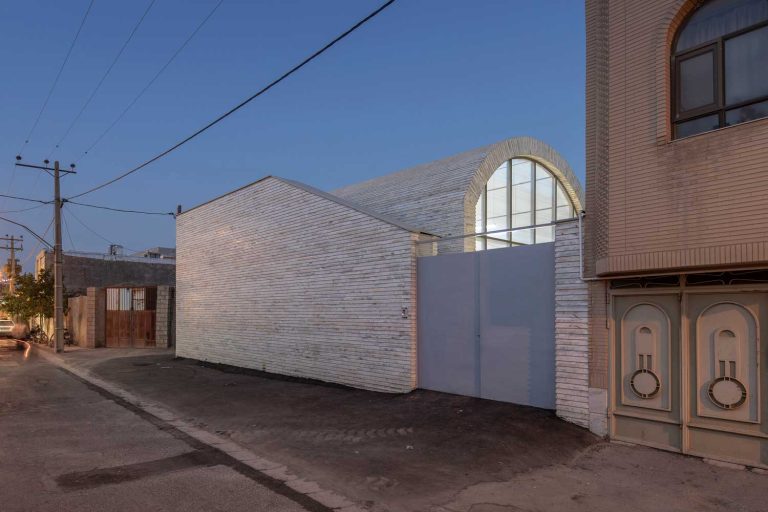نوع مقاله : مقالۀ پژوهشی
نویسندگان
- محمد امینی 1
- محمد حسن خادم زاده 2
1 کارشناسی ارشد مطالعات معماری ایران، دانشکدۀ معماری، پردیس هنرهای زیبا، دانشگاه تهران، ایران.
2 استادیار دانشکدۀ معماری، پردیس هنرهای زیبا، دانشگاه تهران، ایران.

باغ نظر (ماهنامه)
دوره 18، شماره 105
اسفند 1400
صفحه 49-60
بیان مسئله: اجتماعات اقشار مختلف شهروندان، در مکانها و فضاهایی صورت میگیرند که به طور کلی فضاهای جمعی نامیده میشوند. شهرنشینی ترجمة نیاز انسان به زندگی اجتماعی است. این نیاز در انواع رفتار، به طرق و اشکال گوناگون، با توجه به زمانهای مختلف خود را نشان داده است. در دورة آلبویه شهر شیراز از قشرهای مختلفی تشکیل شده بود که هرکدام از این گروهها اجتماعات خاص خود را داشتند و زیر سایة مدارای امیران آلبویه با دیگر مذاهب، و آزاداندیشی نسبی، این اجتماعات را در فضاهای متفاوت یا مشترک برگزار میکردند.
هدف پژوهش: این تحقیق با هدف بررسی فضاهای جمعی شهر شیراز در دوران آلبویه و نحوة تأثیر آن بر کالبد شهر انجام شده است. همچنین با این فرض که فضای موجود از تسامح امیران آلبویه با دیگر ادیان و اقوام باعث پویایی حیات جمعی و مکانهای شهری شده بود، نقش اقشار مختلف در تولید فضای جمعی بررسی میشود.
روش پژوهش: روش تحقیق در این پژوهش، روش تفسیرِ تاریخی است. سپس با رویکرد تحلیلی، مکانهای شهری و محل استقرار آنها در شهر شیراز، معاصر با دورة آلبویه بررسی میشوند. در این روند ابتدا تعاریف مکانهای شهری و فضاهای اجتماعی جمعبندی خواهند شد و سپس با استفاده از این تعاریف و مستندات برداشتشده از منابع دستاول، تحقیق در مورد فضاهای جمعی شهر شیراز در دورة آلبویه انجام میگیرد.
نتیجهگیری: مسجدها، بازار، مدارس و مکاتب، کاخهای حکومتی، میدانها، خانقاه و رباط، معابر، کنیسهها، کلیساها و آتشکدهها فضاهایی هستند که میزبان تعاملات اجتماعی ساکنین شیراز بودند. فضاهایی که اغلب توسط مردم ساخته میشد. از دادههای تاریخی چنین برمیآید که این مکانها بهجز کارکردشان به عنوان یک هویت شهری برای قشرهای مختلف عمل میکرده است و محلات زیستی با ساکنان هممسلک در اطراف آن به وجود میآمده است. بیشتر این فضاها در قسمت جنوب غرب محدودة تاریخی شهر شیراز قرار داشتهاند.
عنوان مقاله [English]
Collective Life and City Shiraz in Buyid era
نویسندگان [English]
- Mohammad Amini 1
- Mohammad Hassan khademzade 2
چکیده [English]
Problem statement: Communities of different classes of citizens are shaped in places and spaces that are generally called collective spaces. Urbanization translates human need for social life. This need has manifested itself in different behaviors, in various ways and forms, according to different times. During the Buyid period, the city of Shiraz was composed of different strata, each of which had its gatherings. These strata held these gatherings in different or common spaces under the shadow of the tolerance of Buyid with other religions, and relative freedom of thought,
Research objective: This study aims to investigate the collective spaces of Shiraz during the Buyid period and scrutinize how they have affected the shape of the city. Also, the role of different strata in the production of collective space is examined by assuming that the contribution of existing space to the dynamism of collective life and urban places was reinforced by the tolerance of the emirs of Buyid with other religions and ethnicities
Research method: The research method in this study is historical. This study adopts an analytical approach to examine urban places and their location in the city of Shiraz during the period of the Buyid. To this end, first, the definitions of urban places and social spaces were summarized, and then these definitions were used, and documents were extracted from primary sources, and research on the urban spaces of Shiraz in the Buyid period was conducted.
Conclusion: Mosques, bazaars, schools and schools, government palaces, squares, monasteries and temples, passages, synagogues, churches, and fire temples are the spaces that hosted the social interactions of Shiraz residents. Spaces that were often created by people. Historical data show that these places, in addition to serving their functions, acted as an urban identity for different strata, and neighborhoods with residents of the same profession had emerged around them. Most of these spaces are located in the southwestern part of the historical area of Shiraz.
کلیدواژهها [English]
- Shiraz
- Buyid Dynasty
- Social Interactions
- urban places
- collective spaces
حیات جمعی و شهر شیراز در عصر آل بویه اصل مقاله 1.28 MB
صاحب امتیاز: پژوهشکده هنر، معماری و شهرسازی نظر
مدیر مسئول: دکتر سید امیر منصوری
سردبیر: دکتر احمد پوراحمد
دوره انتشار: ماهنامه
شاپا چاپی: 1735-9635
شاپا الکترونیکی: 2251-7197

















